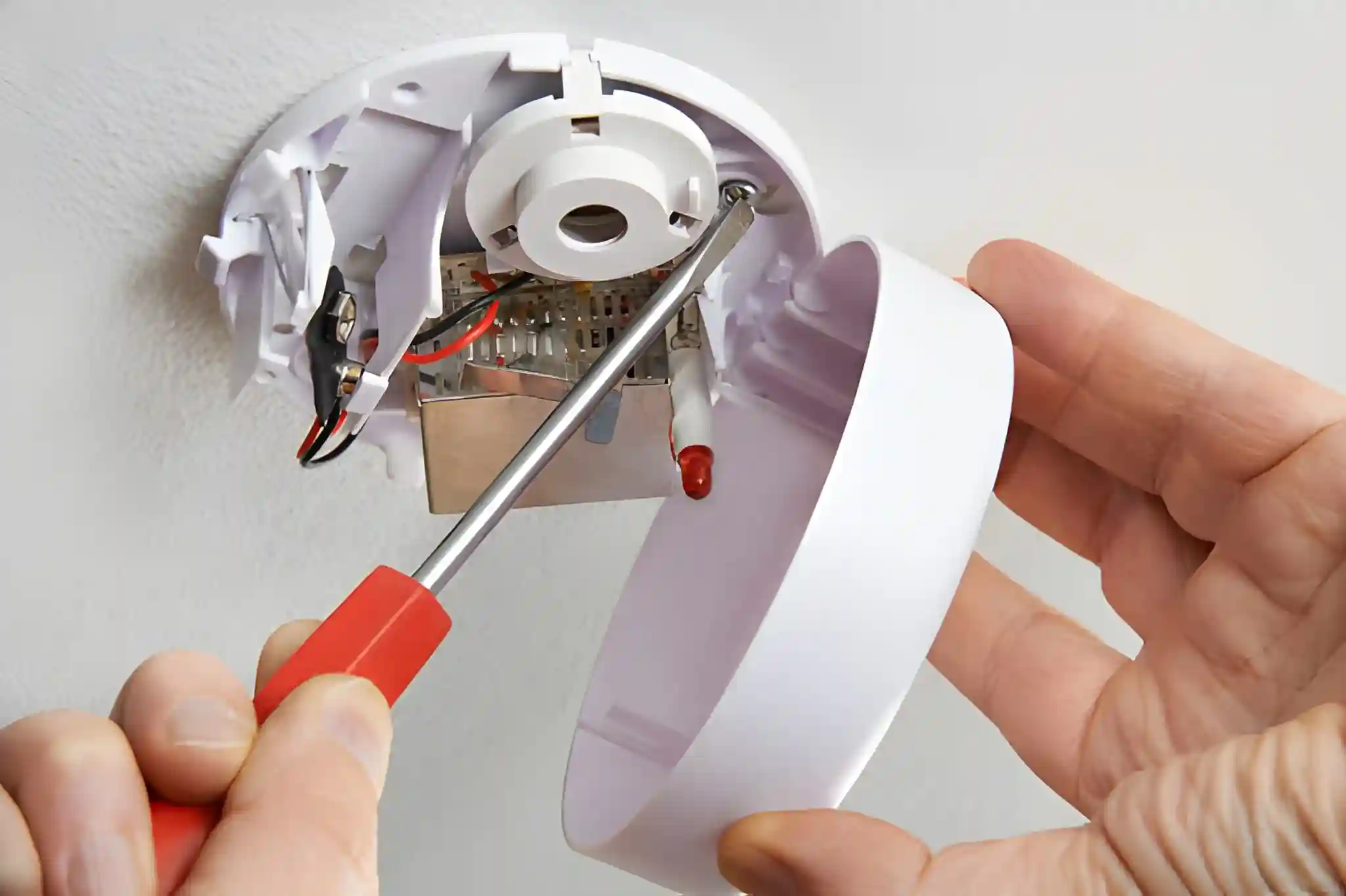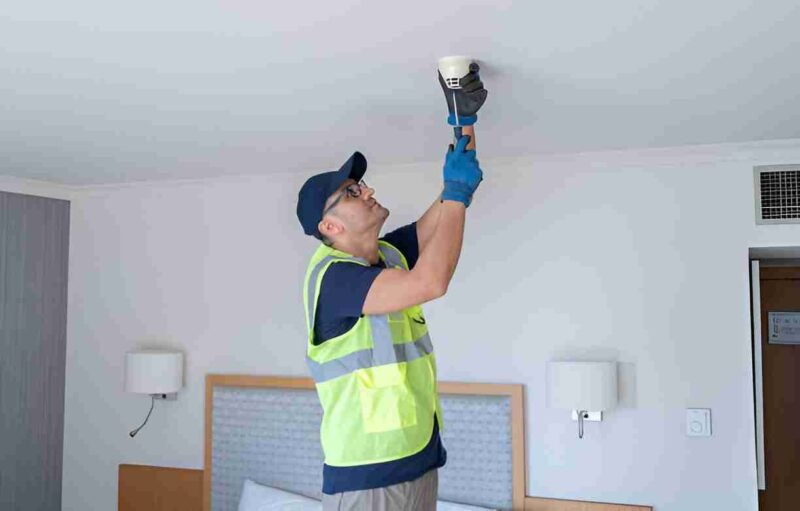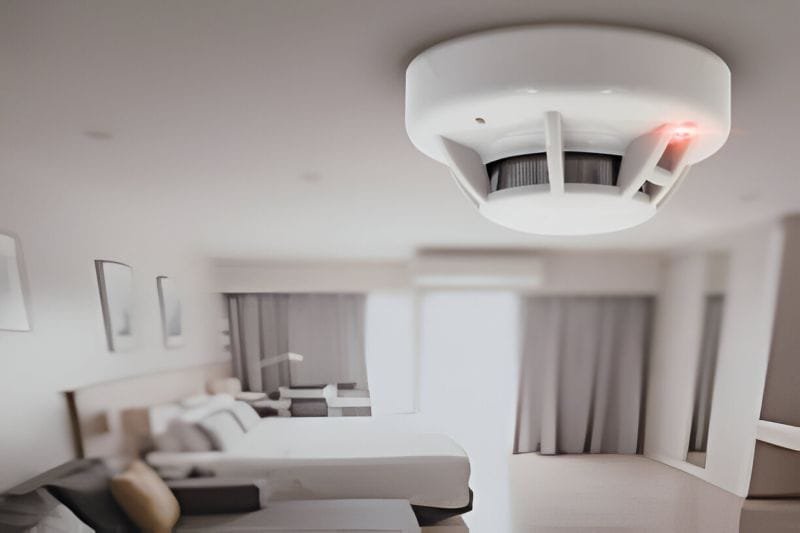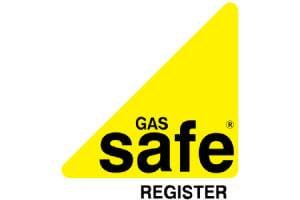
How to install fire alarm system is a critical task that guarantees safety in homes and commercial properties. Proper placement and functionality are paramount for effective fire detection. This guide outlines essential steps for installation, highlighting key considerations and safety precautions. By following these guidelines, individuals can take charge of their fire safety. Yet, questions remain about the nuances of installation that can make a significant difference in protection.
Key Takeaways
- Select high-risk areas like kitchens and hallways for optimal fire alarm placement and secure mounting.
- Connect the fire alarm system to a reliable power source, ensuring proper wiring according to local codes.
- Test the alarms after installation to verify functionality and confirm they respond correctly to triggers.
- Regularly maintain and inspect the fire alarm system, checking batteries and functionality every six months.
- Ensure compliance with UK standards by following installation guidelines and maintaining proper documentation of inspections.
Why Learning How to Install Fire Alarm Systems Is Important
Understanding the importance of how to install fire alarm systems can enhance safety and preparedness in any environment. Knowledge of how to install these systems is vital, as it empowers individuals to take proactive measures against fire hazards. Proper installation guarantees that alarms function effectively, providing timely alerts in emergencies. This awareness can greatly reduce the risk of loss, injury, or even death caused by fire incidents.
Moreover, understanding installation protocols fosters a sense of responsibility within communities. Individuals equipped with this knowledge can assist in maintaining safety standards in residential, commercial, and public spaces.
In addition, being knowledgeable about fire alarm systems encourages regular maintenance checks, assuring that alarms remain in peak condition. Overall, learning how to install fire alarm systems is not merely a technical skill; it is an essential component of community safety that can ultimately save lives and protect property.
Essential Tools and Materials Needed to Install a Fire Alarm
Installing a fire alarm requires specific tools and materials to guarantee a successful setup. Essential tools include a drill, screwdriver, wire stripper, and ladder for accessing high locations. A voltage tester is important for ensuring electrical safety during installation. Additionally, a measuring tape helps in determining the correct placement of the alarm units.
In terms of materials, the fire alarm system itself is the primary component and may include smoke detectors, control panels, and alarm sounders. Wiring is necessary for connecting these components, so appropriate gauge wire should be selected.
Mounting hardware, such as screws and anchors, is also essential for securing the devices in place.
Finally, it is recommended to have a user manual on hand for guidance specific to the fire alarm model being installed. Gathering these tools and materials beforehand can streamline the installation process and enhance overall efficiency.
How to Install Fire Alarm Safely: Key Safety Precautions
Before proceeding with the installation of a fire alarm, it is vital to prioritize safety to prevent accidents and guarantee a successful setup.
First, individuals should read the manufacturer’s instructions thoroughly to understand specific requirements and recommendations. Wearing appropriate personal protective equipment, such as safety glasses and gloves, can help mitigate risks during the installation process.
Making sure the work area is clear of clutter and hazards is essential for maintaining a safe environment. It is advisable to turn off the electrical power when working with wired alarms to avoid shocks.
Additionally, using a sturdy ladder and making certain that it is positioned correctly can prevent falls while reaching high installation points.
Finally, individuals should be aware of local building codes and regulations regarding fire alarm systems to guarantee compliance. Following these precautions will enhance safety and contribute to a successful fire alarm installation.

Step-by-Step Guide on How to Install Fire Alarm in Your Home
After confirming a safe fire alarm installation environment, the next step involves following a systematic approach to fire alarm installation in the home.
This process requires careful planning and execution to guarantee peak functionality and safety.
- Choose the right location: Select high-risk areas, such as kitchens and hallways, for peak coverage.
- Mount the alarm: Use screws or adhesive pads to securely attach the unit to the wall or ceiling, confirming it is at least 10 feet from cooking appliances.
- Connect the power source: Depending on the model, this may involve plugging it in or connecting to hardwired systems.
- Test the system: Once installed, conduct a test to verify that the alarm sounds and the system is operational.
Following these steps will help guarantee that the fire alarm is installed correctly, providing peace of mind and enhanced safety for the household.
How to Install Fire Alarm in a Commercial Property
A thorough approach is fundamental when installing a fire alarm in a commercial property, as it plays an important role in guaranteeing the safety of occupants and protecting valuable assets.
First, it is essential to evaluate the specific needs of the building, taking into account its size, layout, and occupancy type. Consultation with fire safety experts can provide valuable insights into the appropriate system type and components required.
Next, selecting the right alarms, detectors, and control panels is critical. The installation process should follow manufacturer guidelines and comply with local fire codes and regulations. Proper wiring and secure mounting are imperative to guarantee functionality.
Testing the system before finalizing the installation is fundamental to confirm that all components are operating correctly.
Training staff on the fire alarm system’s operation and maintenance is also important, fostering a culture of safety within the commercial property.
Best Locations for Installing Fire Alarms in a Building
Determining the best locations for installing fire alarms greatly impacts their effectiveness in protecting a building and its occupants. Proper placement guarantees that alarms are heard and can promptly alert individuals to potential dangers.
Key locations include:
- Hallways: Install alarms in hallways, particularly near exits, to guarantee coverage throughout the building.
- Common Areas: Areas like lobbies or break rooms should have alarms, as these spaces often accommodate many people.
- Kitchens: Given the high risk of fire in kitchens, alarms should be situated at a safe distance from cooking appliances to prevent false alarms.
- Stairwells: Placing alarms in stairwells provides clear alerts for occupants escaping the building.
How to Install Fire Alarm Wiring Correctly
Proper fire alarm installation wiring is essential for guaranteeing reliable functionality and safety in any building. The wiring must comply with local codes and standards to prevent malfunctions. First, select the appropriate gauge of wire, typically 14 or 16 AWG, for the system’s needs. Next, plan the routing of the wiring, avoiding high-traffic areas to minimize damage. Confirm that all connections are secure and insulated to prevent short circuits.
| Step | Description | Tips |
|---|---|---|
| Choose the Wire | Select a gauge based on system needs | Use 14 or 16 AWG wire |
| Plan the Route | Map out wiring paths | Avoid high-traffic areas |
| Secure Connections | Confirm all connections are tight | Insulate to prevent shorts |
Finally, label all wires to confirm clarity during future maintenance and testing. Following these guidelines will enhance the fire alarm system’s reliability.
How to Install Fire Alarm Devices and Test Them Properly
Fire alarm installation devices require careful attention to detail to guarantee maximum performance and safety. Following a systematic approach guarantees that all components function effectively.
The installation process includes several key steps:
- Select appropriate locations for smoke detectors and alarms, making certain they are not obstructed by furniture or walls.
- Mount devices securely to walls or ceilings as per the manufacturer’s guidelines, using the correct tools and anchors.
- Connect the wiring properly, making sure all connections are tight and insulated to prevent short circuits.
- Test each device after installation, simulating an alarm condition to confirm functionality and proper communication with the control panel.
How to Install Fire Alarm and Carry Out Regular Maintenance
Guaranteeing the functionality of a fire alarm installation system involves both meticulous installation and ongoing maintenance. Proper installation begins with selecting an appropriate location for the alarm, ideally near sleeping areas and on each level of the building.
Once installed, the system must be connected to a reliable power source, making certain backup batteries are in place.
Regular maintenance is essential to keeping the fire alarm operational. This includes testing the alarm monthly to confirm it sounds correctly and checking batteries every six months.
Additionally, users should replace the entire unit every ten years or as recommended by the manufacturer. Cleaning the alarms to remove dust and debris helps maintain sensitivity.
Finally, keeping an updated record of inspections and maintenance activities guarantees compliance with safety regulations and provides a reliable history of the system’s performance.
Regular attention to these tasks greatly enhances the safety provided by the fire alarm system.
How to Install Fire Alarm with Heat Detectors
A thorough fire alarm system often incorporates heat detectors, which are particularly effective in areas where smoke alarms may not function efficiently, such as kitchens or garages.
Installing heat detectors involves several key steps to guarantee peak performance and safety.
- Select appropriate heat detectors based on the specific environment and risks.
- Mount the detectors on ceilings or high walls, making certain they are away from vents and air currents.
- Connect the detectors to the fire alarm system, following the manufacturer’s guidelines for wiring and compatibility.
- Test the system to confirm that the heat detectors activate correctly when exposed to high temperatures.
How to Install Fire Alarm Systems That Meet UK Standards
Fire alarm systems in the UK must adhere to specific regulations and standards to guarantee effective protection against fire hazards. The primary standard governing fire alarms is BS 5839, which outlines the design, installation, and maintenance requirements.
First, one must assess the property to determine the type and number of detectors needed, considering factors such as occupancy levels and building layout. Next, the installation should follow the guidelines for appropriate placement, making sure that alarms are located in key areas such as hallways and near sleeping spaces.
Wiring and connectivity should comply with the IET Wiring Regulations (BS 7671) to promote safety and reliability. Testing and commissioning of the system are vital to verify that each component functions correctly.
Regular maintenance and periodic inspections are also important to uphold the system’s efficacy and compliance with UK standards, safeguarding occupants and minimizing fire risks.

How to Install Fire Alarm Without Professional Help: Pros and Cons
While opting for fire alarm installation without professional help can be appealing for those looking to save costs, it is essential to weigh the potential benefits against the risks involved. Homeowners may find the process rewarding, but it can also lead to serious consequences if not done correctly.
Pros:
- Cost Savings: Avoiding labor fees associated with professional installation.
- Personal Control: Homeowners can customize the system to their specific needs.
- Learning Experience: Gaining knowledge about fire safety and alarm systems.
- Immediate Installation: Installing the system at one’s convenience without waiting for a professional.
Cons:
- Risk of Improper Installation: Increased likelihood of errors that could lead to system failures.
- Liability Issues: Potential hazards if the installation does not comply with local codes.
- Limited Support: No professional guidance during troubleshooting.
- False Sense of Security: Misunderstanding the system’s functionality can result in inadequate protection.
How to Install Fire Alarm System with Interconnected Units
Installing a fire alarm system with interconnected units enhances safety by allowing multiple alarms to communicate with each other, making sure that alerts are heard throughout the home.
To begin, select compatible interconnected smoke detectors, which can be hardwired or wireless. If opting for hardwired units, verify they are connected to a power source and each unit is linked via a designated wiring circuit. For wireless systems, follow the manufacturer’s instructions to pair the units, typically involving a simple button press to establish communication.
Next, determine the ideal placement for each unit, ideally near sleeping areas and on every level of the home. Install mounting brackets securely, and then attach the alarms.
Once installed, test the system to verify that all units respond simultaneously to a triggered alarm. Regularly maintain the system by checking battery levels and testing functionality monthly, guaranteeing complete reliability in an emergency situation.
Frequently asked questions.
Conclusion
To sum up, mastering how to install fire alarm systems is essential for ensuring safety in both residential and commercial settings. By following the outlined steps and adhering to safety precautions and local regulations, individuals can effectively protect their homes and properties from fire hazards. Whether opting for interconnected units or heat detectors, understanding the installation process empowers homeowners and business owners alike to take proactive measures in safeguarding their environments against potential fire risks.







